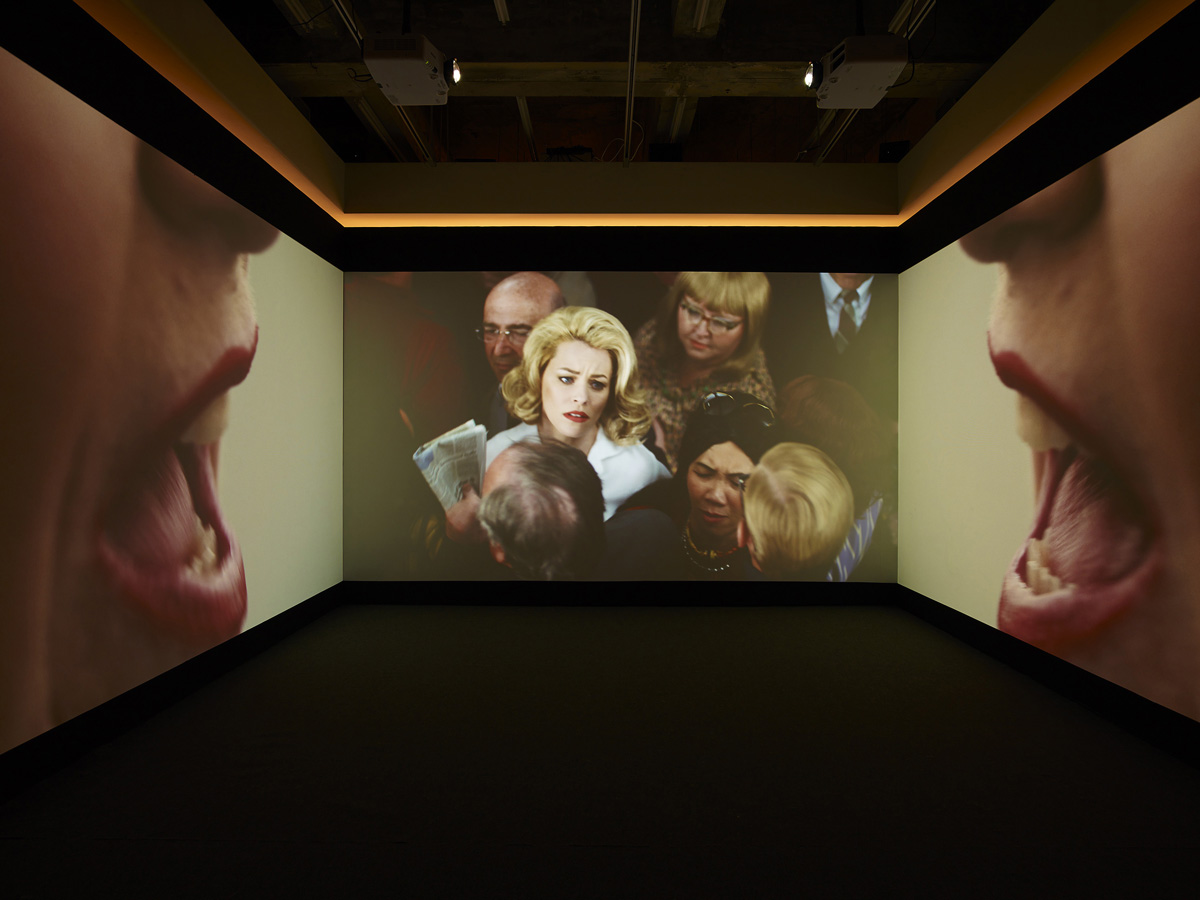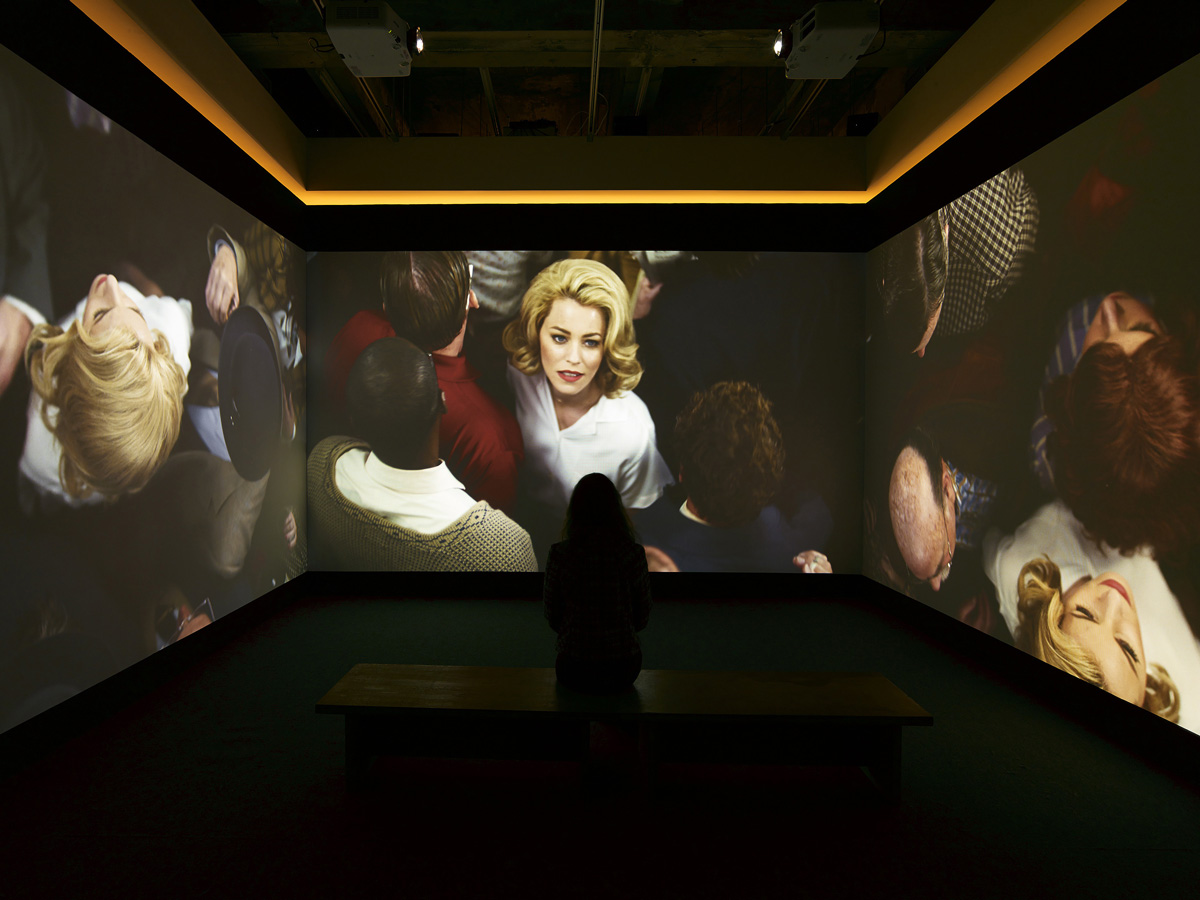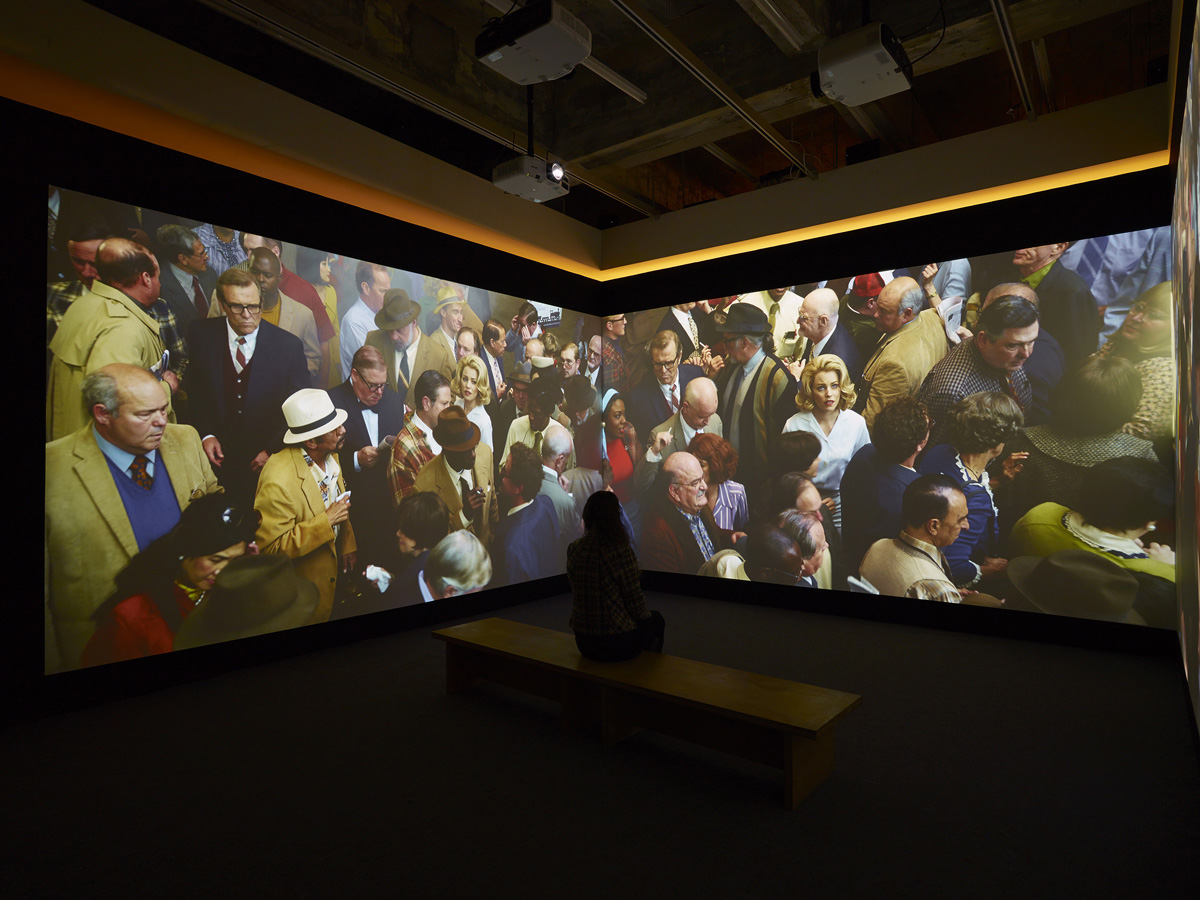by Maggie Finch
7
Together and alone
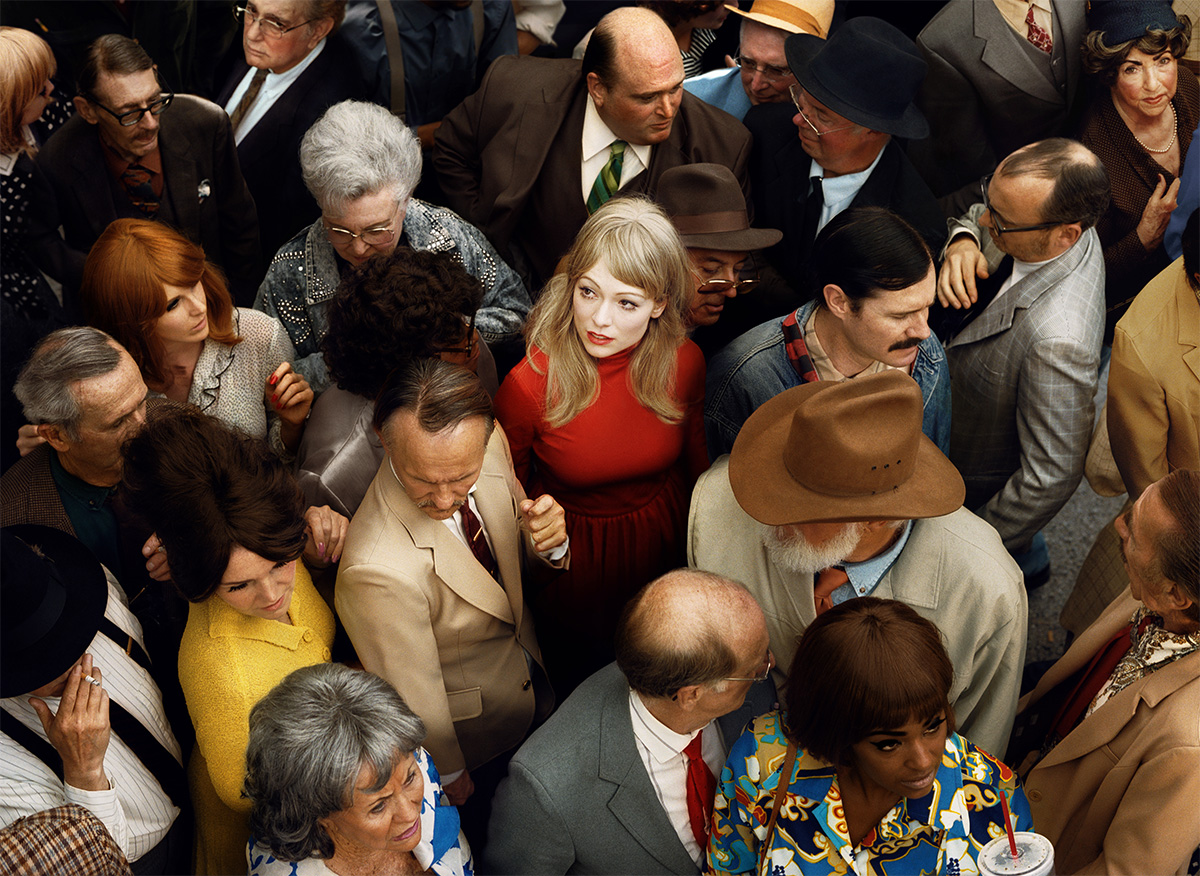
142.0 x 151.0 cm
Collection of Dr Clinton Ng, Sydney
The open crowd is the true crowd, the crowd abandoning itself freely to its natural urge for growth. An open crowd has no clear feeling or idea of the size it may attain; it does not depend on a known building which it has to fill; its size is not determined; it wants to grow indefinitely and what it needs for this is more and more people. In this naked state, the crowd is at its most conspicuous, but, because it always disintegrates, it seems something outside the ordinary course of life and so is never taken quite seriously. Elias Canetti, Crowds and Power, 1960
Prager's recent series Face in the Crowd, 2013, can be seen as a reflection on the psychology of crowd behaviour; studies of the strength, intimacy and freedom an individual can experience when in a crowd, as well as feelings of despair, claustrophobia and insignificance. Prager explores crowds' transitory nature, the ways in which they are reliant on more and more people in order to gain strength, and what Elias Canetti described in his seminal study Crowds and Power as the crowd's inevitable disintegration.13
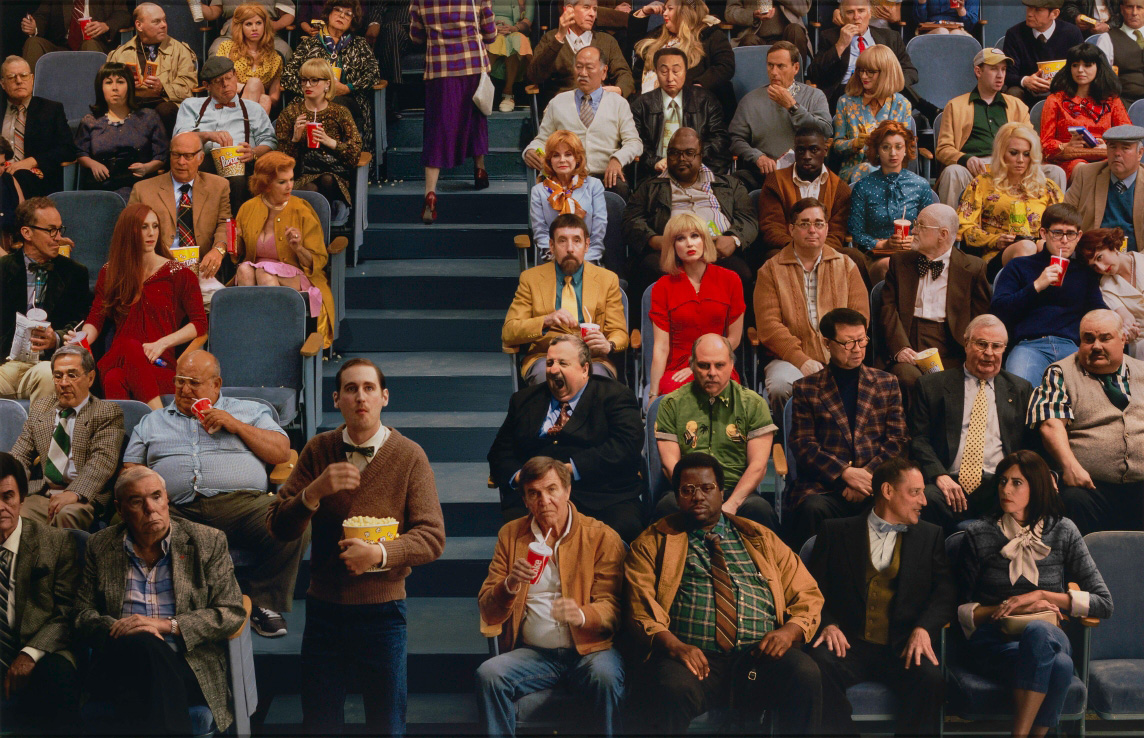
153.7 × 235.4 cm
National Gallery of Victoria
Bowness Family Fund for Contemporary Photography, 2014
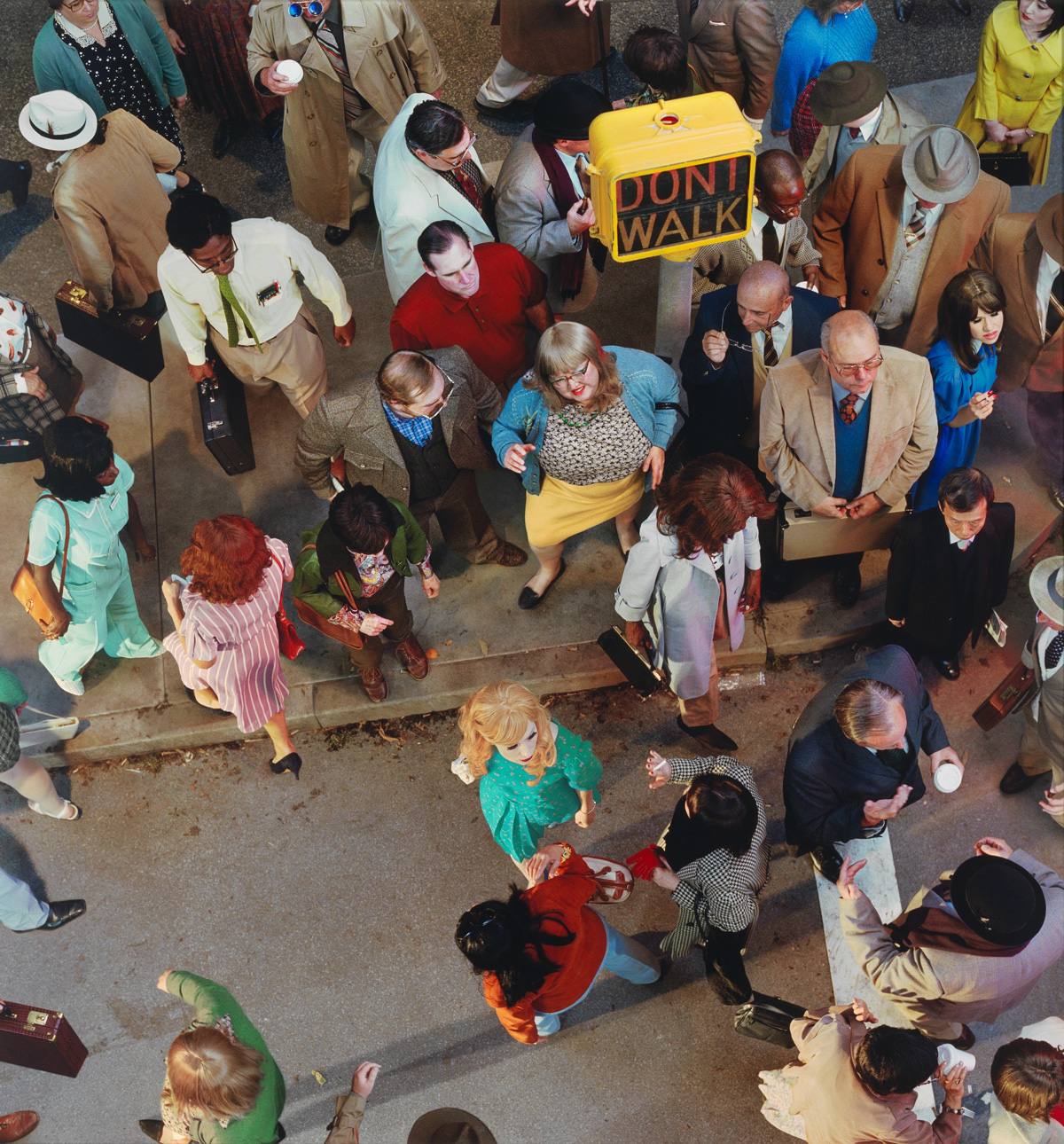
153.7 x 146.1 cm
National Gallery of Victoria, Melbourne
Bowness Family Fund for Contemporary Photography, 2014
Although the series' photographs and film were made on sets, the staged settings take their cue from specific sites frequented by Prager: Washington Square Park in New York, beaches, train stations, movie theatres and airports. She has described how her interest in the subject came from travelling and the particular experience of negotiating crowded situations:
Going through airport terminals, subways, living in London and New York for a while. Being from Los Angeles … you aren't often thrown into situations where you're surrounded by strangers. You're usually in the car or around people you know. I felt like I saw crowds a bit differently than other people; it was a bit jarring.14
Each scene in the series is connected by its voyeuristic vantage point, in a continuation from the Compulsion series. As the viewer you are set above or aside as a distant observer – you watch from afar but your gaze is constantly denied as the individuals in the crowds are seen immersed in their thoughts and actions. Prager describes how in creating the works she both controls the scene and allows for natural and spontaneous interaction between her characters:
It's very directed before we start the shoot. I'll put people in position and give them some kind of character I want them to be. I will give the overall group a direction right before we start shooting, then I let people do their thing. I want it to be as natural as possible. I want it to feel staged to create that sort of isolation and disconnected communication but these aren't reenactments of real crowds.15
This fictitious aspect informs each image, but as Prager notes there is an unexpected intensity created by the impromptu (and uncontrollable) physical and emotional interactions that occur naturally between her casts of characters.
National Gallery of Victoria, Melbourne
Bowness Family Fund for Contemporary Photography, 2014<br/></div>The accompanying three-channel video Face in the crowd, 2013, amplifies the invitation Prager extends in her photographic tableaux to consider individual and collective emotions in a crowd situation. The film commences with a series of individual monologues, a mixture of personal stories that range from the significant and highly emotional to the mundane. Suddenly the individual figures are flooded by a sea of people – the crowd has formed. Our attention is drawn to one figure, played by the actress Elizabeth Banks. Moving in and out of the crowd, she appears both subsumed and separate from the throngs of people: one moment she seems on the brink of being overwhelmed, the next moment the tension turns to calm and she departs the scene. The heroine undertakes a complex journey of immersion and self-reflection as one individual within a crowd of people; as Kaitlin Booher has written, the character's 'lyrical experience, from mundanity to transcendence and back, is a fraction of a whole'.16 The film is, like so many of Prager's works, one imagined narrative framed within a collective memory and experience.
Maggie Finch is Curator, Photography, at the National Gallery of Victoria.

